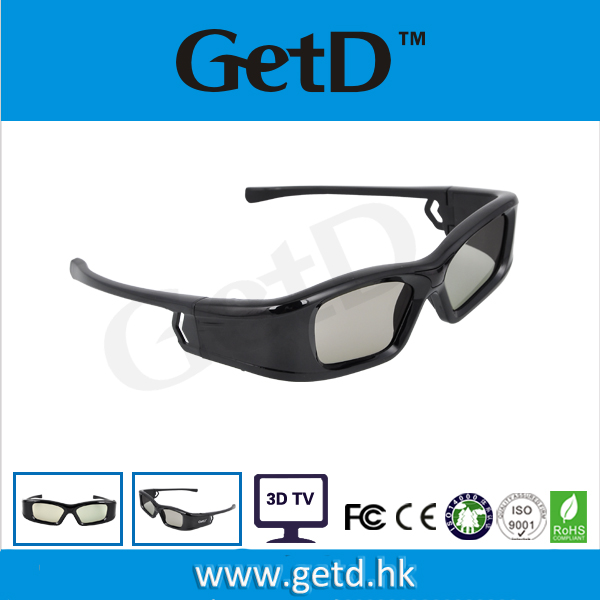
- #3d movies for 3d glasses movie
- #3d movies for 3d glasses manual
- #3d movies for 3d glasses software
- #3d movies for 3d glasses tv
#3d movies for 3d glasses tv
If you have a side-by-side 3D movie, you can only watch it alone with a dedicated headset device, while if you have an Anaglyph 3D movie, you can enjoy it with friends and families on big screens like a PC, a TV or even a giant wall with a projector. Comparing to side-by-side or other 3D modes, Anaglyph 3D can provide a much better 3D visual effect and offer a better immersion. Among all of the 3D modes, Anaglyph 3D is the most welcomed 3D mode. with the help of various 2D to 3D converter programs, more and more people would love to convert their 2D movies into 3D movies, and have a stunning 3D experience without even stepping out of the door.
#3d movies for 3d glasses movie
That is not only because the number of movies made by 3D technology are increasing massively every year, but also because nowadays people can easily convert a regular 2D movie into a 3D movie at home. Visitors can select from the various 3D Blu-ray discs, and as the disc is played, the system will convert it live: the visitors just relax and enjoy the movie - without the glasses.With the fast development of the film industry, watching a 3D movie has never been easier nowadays. Nevertheless, it will still take at least another calendar year before the technology hits department store shelves.Īt the IFA trade show in Berlin from August 31 to September 5 the technology can be tested: An autostereoscopic 3D screen will be set up right in front of a sofa corner at Booth 10 in Hall 11.1. In the next step, the scientists, working in collaboration with industry partners, intend to port it onto a hardware product so that it can be integrated into televisions.
#3d movies for 3d glasses software
The researchers have already finished the software that converts these data. The flickering that could appear on the edges of objects - something that happens due to imprecise estimations - is imperceptible here.

The viewer is aware of nothing: He or she can fast forward or rewind the movie, start it, stop it - and all with the same outstanding quality. Meanwhile, a hardware component estimates the depth map in the background and generates the requisite views. Real-time conversion, by contrast, is like simultaneous interpretation: The viewer inserts a 3D Blu-ray disc, gets comfortable in front of the TV screen and enjoys the movie - without the glasses.

#3d movies for 3d glasses manual
Previous systems were only capable of generating such depth maps at a dramatically slower pace sometimes they even required manual adaptation. And here's the really neat thing: The process operates on a fully automated basis, and in real time." "We take the existing two images and generate a depth map - that is to say, a map that assigns a specific distance from the camera to each object," says Christian Riechert, research fellow at HHI.įrom there we compute any of several intermediate views by applying depth image-based rendering techniques. Researchers at Fraunhofer Institute for Telecommunications, Heinrich-Hertz Institute, HHI in Berlin recently developed a technology that converts a Blu-ray's existing 3D content in a manner that enables them to be shown on autostereoscopic displays. This is because these displays have to present a three-dimensional image in such a manner that it can be seen from different angles - indeed, there is more than one place to sit on a sofa, and you should be able to get the same three dimensional impressions from any position. In the future, the number will probably be even more. However, autostereoscopic displays need five to ten views of the same scene (depending on the type).

Nevertheless, the content might be a bit problematic: The 3D movies currently available on Blu-ray are based on two different perspectives, i.e., two images, one for each eye. Though prototypes of these TV screens already exist, consumers will not have to wait much longer for the market introduction of these autostereoscopic displays. That's why television manufacturers are working on displays that can recreate the spellbinding magic of three-dimensional television images - without the glasses. Be that as it may, those nettlesome 3D glasses might diminish the fun somewhat. Lounging on a sofa while watching a 3D movie is an exquisite pleasure for many film fans. Researchers will unveil this technology in Berlin at this year's IFA trade show from August 31 to September 5 (Hall 11.1, Booth 10). A new technology will soon be adapting conventional 3D films to the new displays in real time. Still, the content has been rather lacking - until now. New television screens will make it possible for viewers to enjoy three-dimensional television programming without those bothersome 3D glasses.


 0 kommentar(er)
0 kommentar(er)
